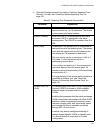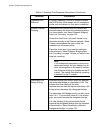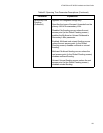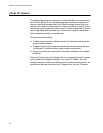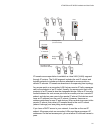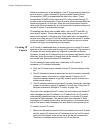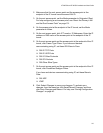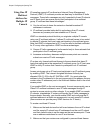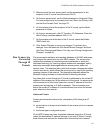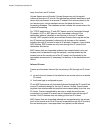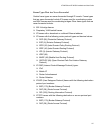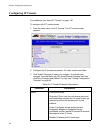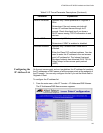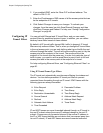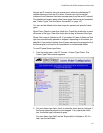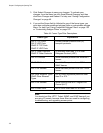AT-WA7500 and AT-WA7501 Installation and User’s Guide
145
3. Make sure that the root access point and the access point at the
endpoint of the IP tunnel have the same LAN ID.
4. On the root access point, set the Mode parameter to Originate if Root.
For help configuring a root access point, see “About the Primary LAN
and the Root Access Point” on page 131.
5. On the access point at the endpoint of the IP tunnel, set the Mode
parameter to Listen.
6. On the root access point, click IP Tunnels > IP Addresses. Enter the
Allied Telesyn multicast address 224.0.1.65.
7. On the access point at the end of the IP tunnel, check the Enable
IGMP check box.
8. Click Submit Changes to save your changes. To activate your
changes, from the menu bar click Save/Discard Changes, and then
click Save Changes and Reboot. For help, see “Saving Configuration
Changes” on page 46.
How Frames Are
Forwarded
Through IP
Tunnels
The access point maintains a forwarding database of all MAC addresses,
and it knows the correct port for each MAC address. The access point
updates this database by monitoring source addresses on each port
(backward learning), by receiving explicit attachment messages, and by
examining messages exchanged between access points when end
devices roam. The database also includes the power management status
of each end device, which allows the access point to support the pending
message feature of the network. The forwarding database allows the
Ethernet bridging software to make efficient forwarding decisions.
Any frame that is sent through an IP tunnel is addressed to the unicast IP
address of the access point at the other end of the tunnel. An access point
at the remote end of the tunnel learns the unicast IP address of the root
access point by listening to IP hello messages. The root access point
learns the unicast IP address of a remote access point when the access
point attaches to the network.
Outbound Frames
Frames are forwarded outbound (to a secondary LAN) through an IP
tunnel if:
an end device is known to be attached to an access point on a remote
IP subnet.
the frame type is configured to pass.
IP and ARP frames are never forwarded outbound through an IP tunnel
unless the destination IP address belongs to the root IP subnet. Usually,
these frames are destined for wireless end devices that have roamed



